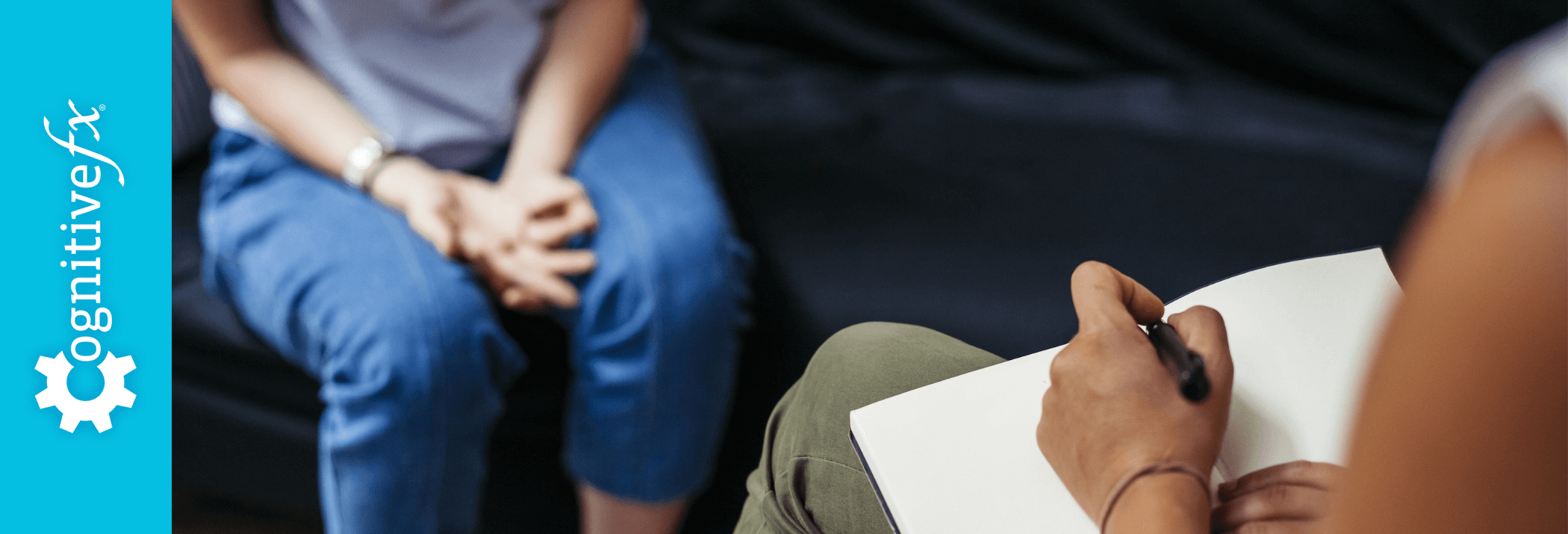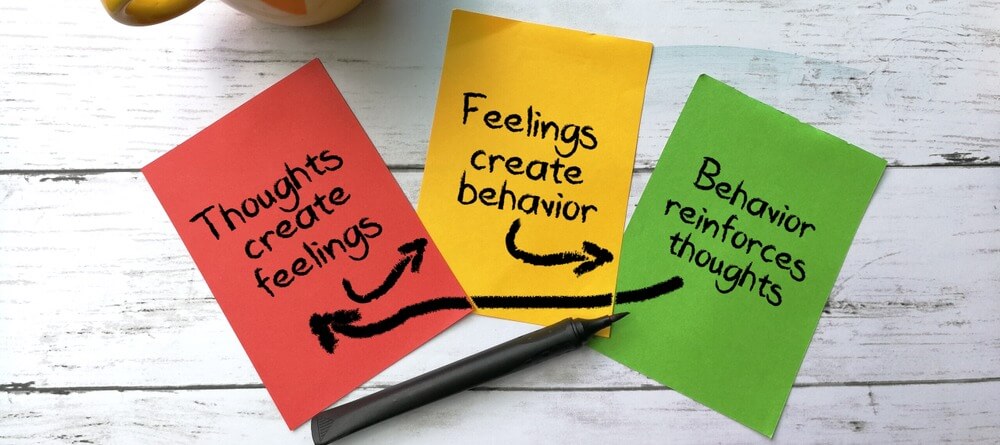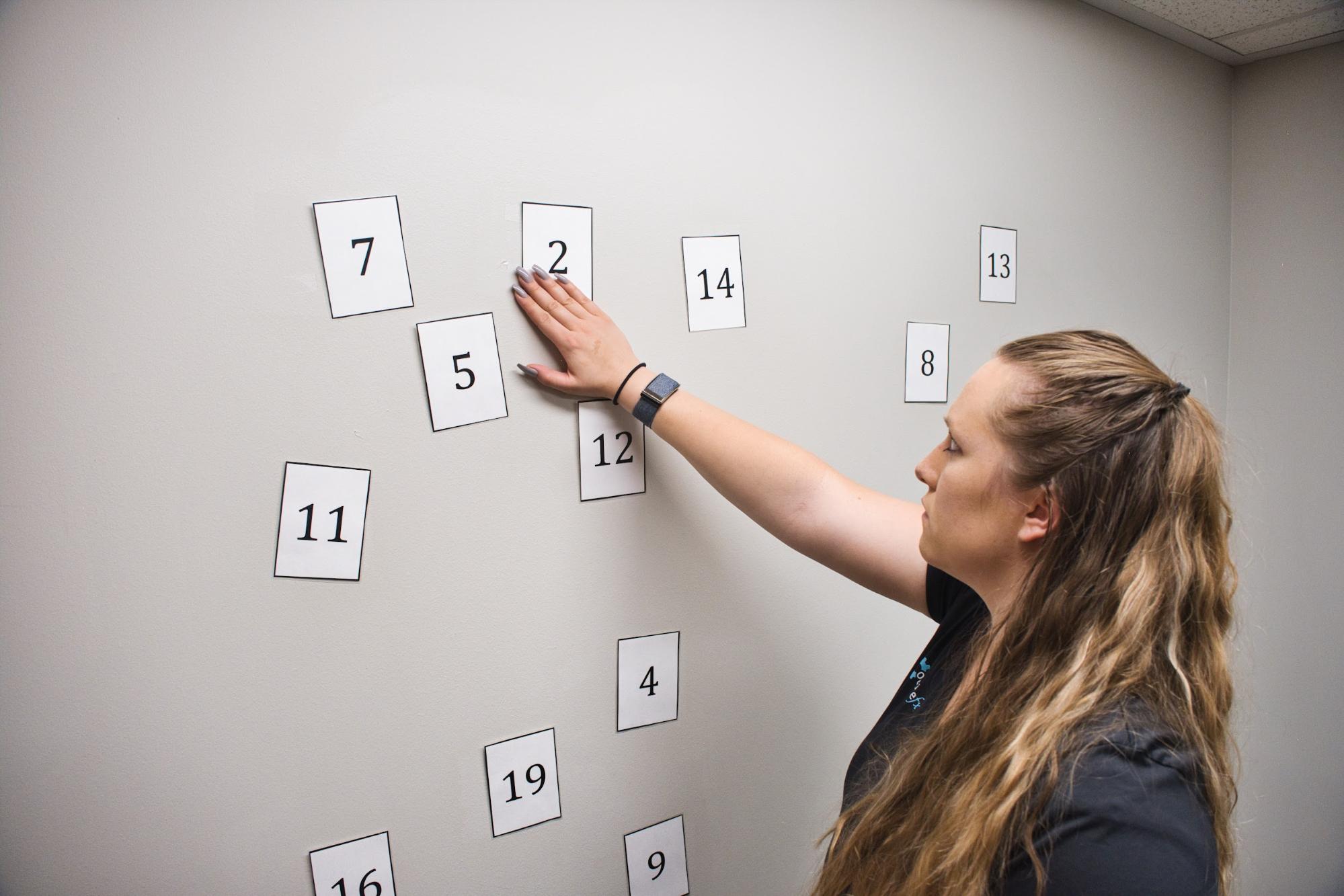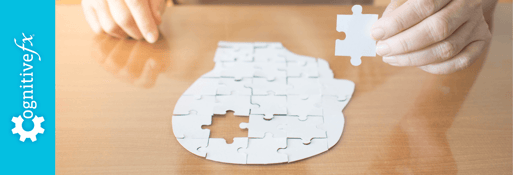Long-Term Anxiety After a Concussion | CognitiveFX
There is a whole world of hurt and pain for patients who experience mental health symptoms after a concussion. Not all of them realize that concussions can cause anxiety, and those who do know it...
Published peer-reviewed research shows that Cognitive FX treatment leads to meaningful symptom reduction in post-concussion symptoms for 77% of study participants. Cognitive FX is the only PCS clinic with third-party validated treatment outcomes.
READ FULL STUDY

Living with the lingering symptoms of a concussion for months or even years is life-changing. Patients with post-concussion syndrome (PCS) can feel worthless, misunderstood, lonely, and frustrated. In fact, almost half of these patients develop anxiety, depression, and other mental health problems. Even if patients don’t develop these conditions, many still struggle with negative thoughts and emotions in their daily lives.
If you have psychological or emotional changes because of persistent postconcussive symptoms, your doctor might recommend cognitive behavioral therapy (CBT). This therapy is based on the idea that cognitive, behavioral, and emotional patterns are all connected. If you can change one of these, then you can affect change in the others.
The effectiveness of this therapy has been well researched. Studies show that CBT can be used to treat most mental health conditions, including anxiety and depression, and patients may achieve a full recovery with long-lasting effects.
We often find that patients confuse CBT with cognitive therapy and use the names interchangeably. However, these are very different types of therapy: Cognitive therapy focuses on neurological and cognitive impairments, such as poor memory, language processing deficits, and brain fog, while CBT addresses psychological and emotional issues, like anxiety and depression.
Not everyone with PCS needs cognitive behavioral therapy; most do need cognitive therapy. But for patients with psychological and emotional symptoms that don’t resolve shortly after treatment for their post-concussion syndrome, cognitive behavioral therapy is a powerful tool. We often refer patients to psychologists specializing in CBT if we feel it would help them recover more fully.
To help you understand if you would benefit from cognitive behavioral therapy in your recovery from PCS, we answer the following questions in this post:
If you’re experiencing emotional and physical symptoms that won’t resolve after a concussion, you’re not alone. 95% of our patients experience statistically verified restoration of brain function after treatment. To see if you are eligible for treatment, schedule a consultation.
Note: Any data relating to brain function mentioned in this post is from our first generation fNCI scans. Gen 1 scans compared activation in various regions of the brain with a control database of healthy brains. Our clinic is now rolling out second-generation fNCI which looks both at the activation of individual brain regions and at the connections between brain regions. Results are interpreted and reported differently for Gen 2 than for Gen 1; reports will not look the same if you come into the clinic for treatment.

Cognitive behavioral therapy (CBT) is a form of psychotherapy designed to help patients identify and address negative thoughts and beliefs that influence their behavior and emotions.
The general idea behind CBT is that you can change the way you feel by changing the way you think and behave. Therapists use a variety of techniques to teach patients how to replace unhelpful cognitive habits and mindsets with a healthier approach to triggering situations.
For example, if you’ve experienced a panic attack, you may start avoiding certain situations because you’re always afraid that they will trigger another panic attack. This creates a cycle of living in fear and becoming increasingly more anxious. Instead, CBT can teach you that, even though you’ve suffered a panic attack, it doesn’t have to rule your life. Your therapist can identify panic triggers and help you change your behavior and thoughts about those triggers, with the aim of decreasing and ultimately stopping any further attacks.
Unlike other types of therapy, which focus on issues that happened in the past, CBT looks at what’s happening in your life right now. The aim is to help patients develop effective ways to deal with current problems and increase their quality of life.
CBT offers the following benefits:
CBT is effective for a wide range of mental health issues and other types of problems. Some of the conditions CBT can treat include:
In addition to mental health conditions, CBT can also help patients with:

As described, CBT will help you understand and change your thought and belief patterns, which, in turn, affect your emotions and behaviors. These are skills you can use for the rest of your life.
Depending on the issue you’re dealing with, there are several techniques and interventions CBT therapists may use:
This is often the first step in therapy, and it involves examining thought patterns. Perhaps you always assume the worst will happen, or you place too much importance on minor details. Thinking this way will inevitably affect how you live your life.
Once you’re aware of dysfunctional thought patterns, you can learn to reframe them in a more realistic light. For example, “I missed my deadline at work; I'm totally useless.” can be transformed into, “This wasn’t my best day, but I still contributed in many ways.” In the beginning, it can be challenging to change dysfunctional thought patterns. The more you persist, the easier it will become.
During guided discovery, your therapist will get familiar with your point of view about a particular issue, and then assist you in evaluating your beliefs and broadening your way of thinking. They will teach you how to see things from different perspectives.
Exposure therapy is useful for many patients. The aim is to slowly expose you to the things that you avoid or that provoke distressing emotions while teaching you how to respond more effectively. This is usually done in small increments so that you feel more confident in your coping abilities.
Writing is a time-honored way to access your deepest thoughts. Your therapist may ask you to record all the thoughts that pop into your mind when you feel distressed, as well as the alternative thoughts that you develop. Putting it in writing is a good way to distance yourself from your upsetting thoughts and to change them once you’re aware of them.
This technique will help you with an activity that you’re avoiding because it causes you distress. The first step is to put it on the calendar. Once you’ve made the decision to go ahead, you’re more likely to follow through. In the long term, activity scheduling can help you establish good habits even for the things you’re dreading.
This method is typically used for patients who have a tendency to think that the worst will always happen or who think that no action they take will make a difference. Before starting something, your therapist will ask you to imagine the outcome. Afterwards, you will talk about whether your predictions came true or not. Over time, you will start to see that your worst-case scenarios are unlikely to happen, but even if they do, the situation will still be manageable.
Role playing can be very helpful to work through different scenarios in potentially difficult situations. This technique will help you challenge thought patterns and gain a variety of skills, including problem-solving skills, assertiveness, and communication skills.
This involves taking a seemingly daunting task and breaking it into smaller, more achievable steps. Each small step you complete builds your confidence. By using this approach, the “journey” to complete a task will seem less overwhelming.
Setting new goals is an important step during recovery from psychological or emotional challenges. During CBT, your therapist can help you set your own goals by teaching you about SMART (specific, measurable, attainable, relevant, time-based) goals and how to focus on the process as much as the outcome.
Learning new skills such as communication, emotion regulation, or problem-solving is another important part of CBT. For example, problem-solving skills help you identify and solve problems that arise in your life. Typically, therapists will help you create a list of possible solutions to a problem and evaluate the strengths and weaknesses of each one. The aim is for you to learn to choose and implement a solution.
Self monitoring is an important part of CBT. This includes tracking your behaviors, emotions, and thoughts in between therapy sessions and then sharing them with your therapist. For example, if you have a sleeping disorder, you might keep track of your sleep habits and any thoughts or feelings you have about sleeping. Different forms of self-monitoring also help you decenter from particular thought and emotion patterns — in other words, to stand back and observe them rather than fuse with them.
CBT also includes relaxation techniques, such as deep breathing exercises, muscle relaxation, and mindfulness. You can try audio resources and YouTube videos to practice these techniques. The idea is to lower stress and to teach your body how to relax. Mindfulness is also used to teach you how to decenter from your thoughts and observe them rather than to react to them at face value.

To get the most out of your CBT sessions, view your relationship with your therapist as a partnership. Therapy is most effective when you're an active participant involved in the decision-making and change process.

Treating the physical and cognitive deficits caused by a mild or severe traumatic brain injury (TBI) is essential to recovery. If neuro-cognitive treatment doesn’t completely resolve your psychological and emotional symptoms, cognitive-behavioral therapy could be the right option for you.
CBT focuses on changing dysfunctional thoughts and behaviors, allowing patients to develop new thought and behavioral patterns and to learn new coping skills. This approach can help PCS patients who have developed psychological and emotional difficulties due to their brain injury, in addition to those whose conditions were pre-existing. Not only does CBT shorten concussion recovery time, but according to this pilot randomized controlled trial, it also reduces the number of patients that develop post-concussion syndrome after a brain injury in the first place.
It’s common for PCS patients to develop mental health issues following a concussion. These issues could take many forms, from anxiety and panic attacks to PTSD and depression. Multiple studies have shown that CBT can successfully treat these patients and reduce symptoms of depression and anxiety, as well as PTSD, OCD, personality disorders and other emotional and behavioral conditions.
We’ve covered many of these conditions and how they affect PCS patients in more detail in other posts. You can find them here:
If you’re considering CBT to help with any of these symptoms, make sure that you find a therapist who will use the specific protocol for your issues. If you have PTSD, make sure your therapist is using the protocol for PTSD; if you have panic attacks, make sure it’s the one specifically for panic attacks. CBT treatment methods are well-defined and specific to each issue. You’ll get the best results when you use the right type of CBT for your symptoms.
CBT can also be used to treat a variety of other conditions, including insomnia and headaches.
For example, about two-thirds of TBI patients suffer from sleep disturbances after a concussion, which may last for months or years after the original injury. CBT can help these patients overcome insomnia and recover their normal sleeping patterns. In fact, therapists developed a specific CBT approach to treat insomnia — called CBT-I — which is fast becoming the preferred treatment compared to sleep medication. Not only does it have positive long-term benefits, but it also avoids the side-effects medication can have.
Using the latest technologies, patients can now use digital CBT for insomnia in the form of a downloadable phone app. This can be part of your standard therapy between your sessions or entirely as a stand-alone procedure without any form of support from a therapist. Despite the lack of human interaction, results so far seem very promising.
Another condition often treated with CBT includes post-traumatic headaches in PCS patients. Studies show that CBT — either alone or in combination with medication — is a valuable tool to treat this condition in some patients. It has the added bonus of reducing medication side effects and reducing costs.
Finally, CBT can also address relationship issues. After a brain injury, it can be difficult to maintain relationships with friends and relatives. Patients may feel isolated, or they may think that people around them don’t understand their situation. CBT can help these patients develop better communication strategies to connect with their loved ones and navigate post-injury behavioral changes.

Take time to find the right therapist for you. You may feel inclined to choose the therapist with the best credentials, but it’s also important to find someone with whom you can build a good and trusting relationship.
Most large mental health organizations have searchable databases of accredited therapists on their website. Once you have a list of therapists in your area, you can filter the results by searching for specific areas of expertise.
We recommend searching these databases:
Explore local resources. For example, if you’re a student, ask your school counselor to help you find a CBT therapist. Your family doctor might also have a list of qualified therapists in your area.
If you need treatment for a specific condition, narrow your search down to therapists who specialize in that area. For example, if you’re struggling with phobias, look for therapists that offer exposure therapy, which is a gold standard for the treatment of these conditions. Likewise, if you have been diagnosed with PTSD, consider searching for a therapist with a background in this condition.
When searching for a therapist, make sure you check their credentials. Often you will be able to find this information on their website, or you can contact your state licensing board. CBT requires specific training that many therapists do not have, and some therapists will say they can provide it even though they are not certified in CBT. Proper credentials are particularly important if you plan to use your insurance, as most companies require you to use a licensed professional.
Once you find a potential therapist, book an initial consultation to see if you like them. Make sure you ask about their treatment approach, experience in the particular condition that you have, and any other pertinent questions.
Here are a few questions you may want to ask:
After your initial consultation, ask yourself how comfortable you felt with the therapist and whether you would be able to be honest with them. Therapists should always make you feel comfortable about sharing your experiences. If you think that this therapist is not right for you, and you don’t feel like you could open up to them, continue your search. You don’t have to settle for the first therapist you find.

Typically, therapists consider CBT a short-term therapy, ranging from about 4 to 20 hourly sessions. Usually, treatment lasts several months, and, depending upon the condition, it’s rare that patients need to stay in therapy for more than a year.
Most patients improve quickly, but some may need additional sessions. After your treatment is complete, you may be offered some follow-up sessions at longer intervals, perhaps every few months.
Factors that influence duration of treatment include:

Therapy doesn’t have to be restricted to your therapist’s office. You can continue to use many of the techniques you learned during CBT in your daily life.
Here are some techniques you can try at home:
Learn to decenter from your thoughts and restructure them before they lead to distressing emotions or behavior. Fight the vicious loop that develops between your harmful thoughts, unhealthy emotions, and damaging behavior patterns.
When you feel overwhelmed by a large task, cut it into small chunks and tackle one at a time. By completing a series of small tasks, you will get much more done versus thinking about the task as a giant chore. Once you get going, you'll be amazed at what you can achieve.
Try an activity that you wouldn’t normally do. It can be difficult at first, but start slowly and gradually increase the frequency or difficulty of the new activity. This will bring new feelings which can be extremely beneficial for you. Why not pick up a new hobby or join a fitness class?
Meditation can help you disengage from distressing thoughts and emotions. Thoughts will come and go in your mind; simply let them fade away. Stay in the present moment.

Cognitive behavioral therapy is a highly effective treatment for mental health issues, but it’s not a complete treatment for post-concussion syndrome. Cognitive rehabilitation after a mild traumatic brain injury requires a multidisciplinary approach to treat cognitive, psychological, physical, and emotional symptoms like poor executive function, exercise intolerance, brain fog, fatigue, and more.
For this reason, our team includes a neuropsychologist, a clinical psychologist, a neuroscientist, a neuroradiologist, and numerous therapists who work with you during our treatment, which we call Enhanced Performance in Cognition (EPIC) Treatment.
Before treatment starts, each patient undergoes a form of fMRI called a functional neurocognitive imaging (fNCI). This scan identifies which areas in your brain were affected by the head trauma.
In these areas, the connection between brain cells (neurons) and blood vessels (vascular system) is disrupted. To compensate, other areas of the brain take on more than they should and become hyperactive, draining much of the resources available. This phenomenon, known as neurovascular coupling dysfunction, is one of the root causes of concussion symptoms.
The results of the scan allow our team of therapists to formulate a customized treatment plan for each patient to restore physical and cognitive function. The idea is to target the specific areas that were affected by the brain injury, so each patient receives a slightly different treatment plan.

The key is to use different types of therapies to address different symptoms. We provide a unique combination of aerobic exercise, sensorimotor therapy, physical therapy, balance therapy, neuromuscular therapy, cognitive exercises, vestibular therapy, occupational therapy, and more. Over 95% of our patients experience statistically verified restoration of brain function after this individualized treatment at our clinic.
After treatment, patients receive a second fNCI scan to find out how much their brain improved. We also meet with you at the end of treatment to discuss the range of exercises you can do at home to continue improving.
Because our treatment course is only a short period of time, we can only begin cognitive-behavioral therapy. We will assess your mental health, educate you about CBT treatment options, and make recommendations for further treatment after EPIC treatment, which may include cognitive-behavioral therapy. We’re happy to help you find a suitable, certified CBT provider in your area of residence.
If you’re experiencing emotional and physical symptoms that won’t resolve after a concussion, you’re not alone. 95% of our patients experience statistically verified restoration of brain function after treatment. To see if you are eligible for treatment, schedule a consultation.

Dr. Spangler is a Clinical Psychologist with over 20 years of experience working in both clinical and academic settings. She earned her doctorate degree in Clinical Psychology at the University of Oregon followed by a Postdoctoral Research Fellowship in the Department of Psychiatry at the Stanford University School of Medicine. Dr. Spangler served as a Professor of Psychology at Brigham Young University for 15 years where she directed training in Cognitive Behavioral Therapy for the Clinical Psychology Doctoral Program, and conducted research on the etiology and treatment of depressive, anxiety, and eating disorders. She also served as a Visiting Professor in the Department of Psychiatry Cognitive Therapy Centre at Oxford University in England. Dr Spangler has authored over 60 publications and has lectured worldwide. She has received numerous awards for her collective work from the National Institute of Mental Health, the American Psychological Association, the International Association for Cognitive Psychotherapy, the Association for Behavioral and Cognitive Therapies, the Beck Institute, and the National Association of Professional Women.

There is a whole world of hurt and pain for patients who experience mental health symptoms after a concussion. Not all of them realize that concussions can cause anxiety, and those who do know it...

If you’ve had a severe or mild traumatic brain injury (severe TBI or mild TBI) that’s left you with post-concussion syndrome (PCS), just thinking can be taxing. Cognitive health is “the ability to...

It should come as no surprise that COVID-19 — both the illness itself and all the situational changes that come with the coronavirus pandemic — is messing with our minds. Many people are experiencing...

There is no exact time frame for recovering from a mild traumatic brain injury (mTBI), otherwise known as a concussion. The majority of people who sustain an acute concussion recover within a few...

Mild or severe traumatic brain injury (concussion and TBI) can cause upsettingchangesto your mental health. Brain injury can worsen pre-existing mental illness or cause new symptoms — such as...

Dizziness. Nausea. Balance problems. Car-sickness. These are a few of the unpleasant symptoms of vestibular dysfunction after a head injury. Fortunately, they don’t have to be permanent; most...
Published peer-reviewed research shows that Cognitive FX treatment leads to meaningful symptom reduction in post-concussion symptoms for 77% of study participants. Cognitive FX is the only PCS clinic with third-party validated treatment outcomes.
READ FULL STUDY